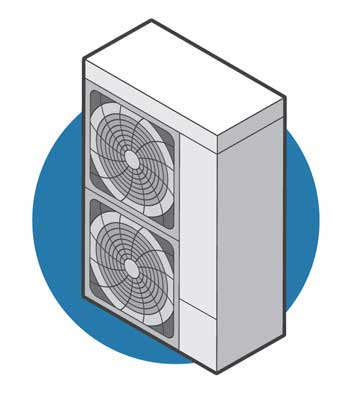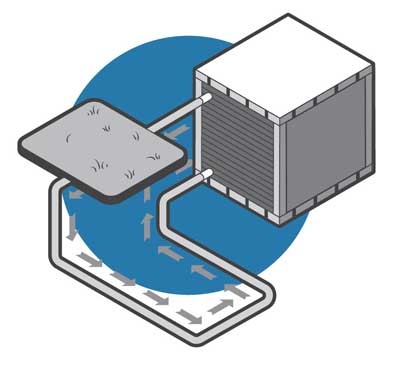Heat pump technology is one of the most advanced and energy-efficient heating and cooling technologies available. Heat pumps do not create heat, like combustion furnaces do. They simply transfer or “pump” heat using heat exchangers, compressors and refrigerant.
Since more heat energy is transferred than consumed in the process, the efficiencies of heat pumps range from 200-400 percent as compared to 80-95 percent for combustion furnaces.
Air-Source Heat Pumps
- Most commonly used heat pumps.
- Moves heat rather than converting it from a fuel like combustion heating systems.
- Can reduce heating costs by about 50 percent when compared to baseboard heaters or electric furnaces.
- Newer, more efficient systems represent a legitimate space heating alternative in colder regions like the Northeast and Midwest.
Note: When temperatures drop below 10-25 degrees Fahrenheit, you will need an auxiliary heating system.
Geothermal Heat Pumps
- More expensive to install but provide more energy savings for heating and cooling; federal tax incentives may be available.
- Moves heat through pipes buried underground.
- When compared to a conventional heating system, can reduce energy use by 25-50 percent.
- Effective in extreme climates.
- Not ideal for smaller lots and certain soil conditions.
Ductless Mini-Split Heat Pumps
- Easier to install, quiet, small in size.

- Flexible for heating and cooling individual rooms and smaller spaces.
- No energy loss through ductwork, which accounts for more than 30 percent of a home’s energy use for space heating/cooling.
- Installation can be pricey, but federal tax incentives may be available.


